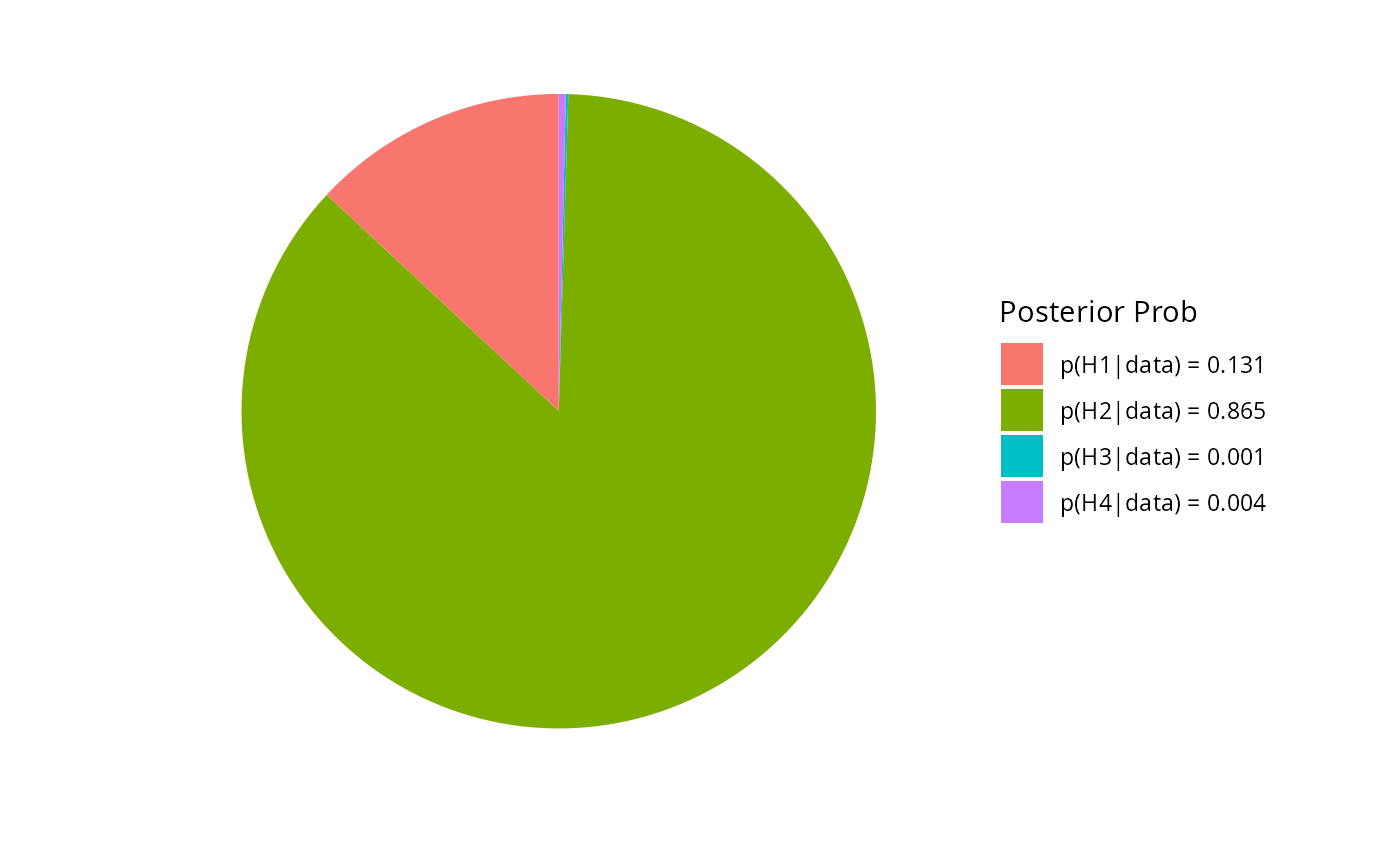Plot the posterior hypothesis probabilities as a pie chart, with each slice corresponding the probability of a given hypothesis.
Usage
# S3 method for class 'confirm'
plot(x, ...)Examples
# \donttest{
#####################################
##### example 1: many relations #####
#####################################
# data
Y <- bfi
hypothesis <- c("g1_A1--A2 > g2_A1--A2 & g1_A1--A3 = g2_A1--A3;
g1_A1--A2 = g2_A1--A2 & g1_A1--A3 = g2_A1--A3;
g1_A1--A2 = g2_A1--A2 = g1_A1--A3 = g2_A1--A3")
Ymale <- subset(Y, gender == 1,
select = -c(education,
gender))[,1:5]
# females
Yfemale <- subset(Y, gender == 2,
select = -c(education,
gender))[,1:5]
test <- ggm_compare_confirm(Ymale,
Yfemale,
hypothesis = hypothesis,
iter = 250,
progress = FALSE)
# plot
plot(test)
 # }
# }
